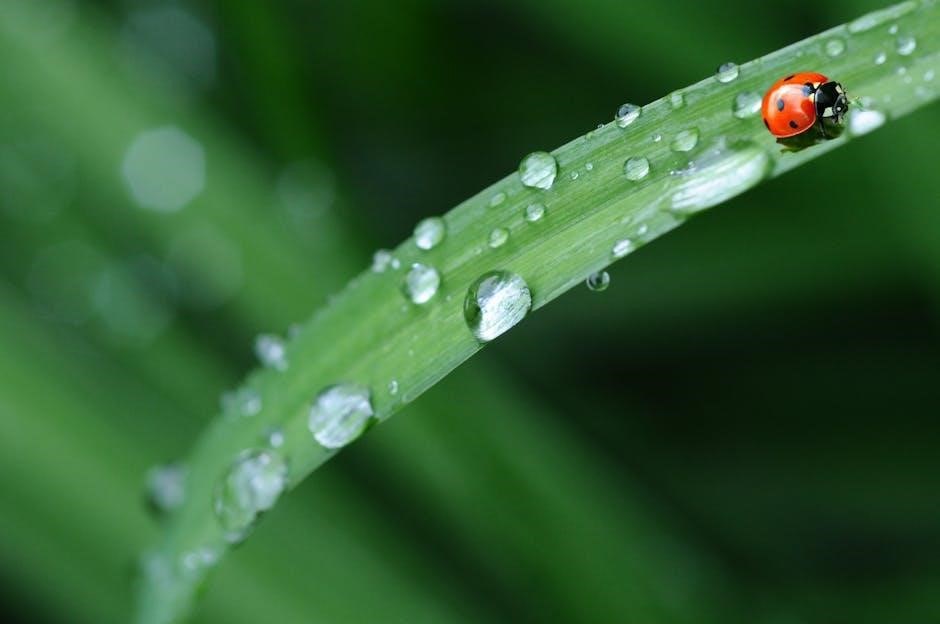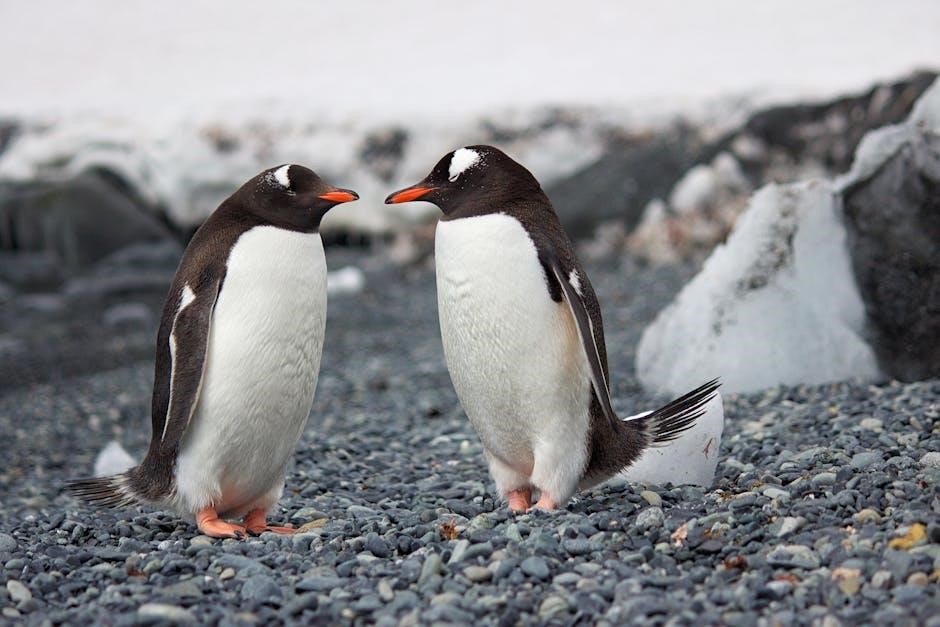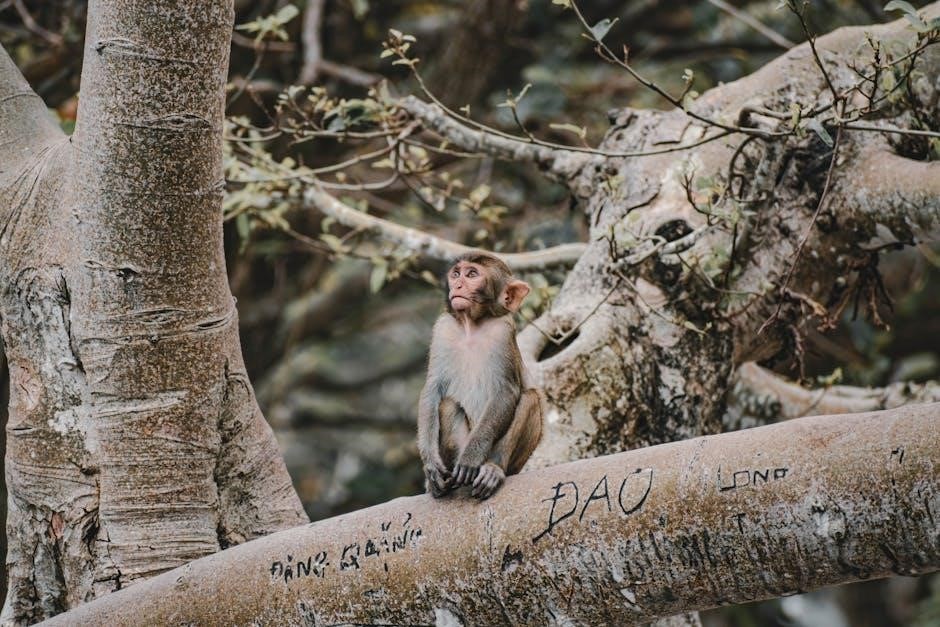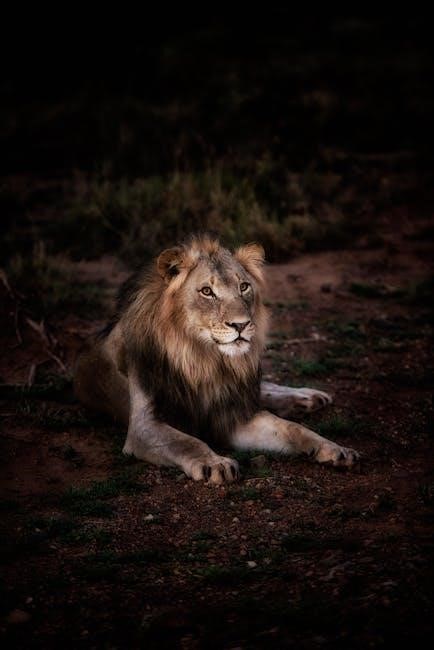Mathematics plays a crucial role in wildlife biology with prerequisites including statistics and mathematical methods, necessary for analyzing data and understanding ecological concepts effectively always online.
Overview of Required Courses
Required courses for wildlife biology math prerequisites include a range of subjects such as mathematics, statistics, and biological sciences. The courses provide a foundation for understanding ecological concepts and analyzing data. Students are required to complete at least 18 credit hours of coursework, which includes introductory applied statistics, mathematical methods, and biological statistics. The courses are designed to equip students with the necessary skills to succeed in wildlife biology, including data analysis, research design, and critical thinking. Additionally, students are required to complete general education and degree requirements, which include courses in biology, chemistry, and physics. The required courses are carefully selected to provide students with a comprehensive understanding of wildlife biology and prepare them for a career in the field. Overall, the required courses provide a solid foundation for students to pursue a degree in wildlife biology.
Mathematics and Statistics Requirements
Mathematics and statistics requirements include coursework in statistical analysis and mathematical modeling techniques always online effectively.
Biological Statistics and Mathematical Methods
Biological statistics and mathematical methods are essential components of wildlife biology, enabling professionals to collect and analyze data, model populations, and make informed decisions.
Mathematical methods, such as regression and correlation analysis, are used to identify relationships between variables, while statistical techniques, like hypothesis testing and confidence intervals, are used to draw conclusions from data.
These methods are critical in understanding ecological concepts, such as population dynamics, community structure, and ecosystem function.
By applying biological statistics and mathematical methods, wildlife biologists can develop effective conservation strategies, manage wildlife populations, and mitigate the impacts of human activities on the environment.
The use of these methods requires a strong foundation in mathematics and statistics, as well as a deep understanding of ecological principles and concepts.
As such, coursework in biological statistics and mathematical methods is a crucial part of wildlife biology programs, providing students with the skills and knowledge needed to succeed in this field.

Prerequisites for Wildlife Conservation Degree
Wildlife conservation degree requires passing courses including general education and degree requirements with minimum grade of C always necessary for students to succeed online programs.
General Education and Degree Requirements
To pursue a degree in wildlife conservation, students must fulfill general education and degree requirements, which typically include a minimum number of credit hours in subjects such as biology, chemistry, and mathematics. The curriculum is designed to provide a comprehensive understanding of the principles and concepts that underlie wildlife conservation. Students are required to complete a set of core courses, as well as elective courses that allow them to specialize in a particular area of interest. The degree requirements may also include a capstone project or internship, which provides hands-on experience in the field. By completing these requirements, students can gain the knowledge and skills needed to succeed in a career in wildlife conservation. The specific requirements may vary depending on the institution and program, but they are all designed to provide a well-rounded education in wildlife conservation.

Recommended Subjects for Wildlife Biology
Biology, chemistry, and physics are recommended subjects for studying wildlife biology effectively online always.
Biology, Chemistry, and Physics as Recommended Subjects
For a career in wildlife biology, it is essential to have a strong foundation in biology, chemistry, and physics. These subjects provide a comprehensive understanding of the natural world and the principles that govern it. Biology helps students understand the structure, function, and evolution of living organisms, while chemistry provides insight into the chemical processes that occur within ecosystems. Physics, on the other hand, helps students understand the fundamental laws that govern the behavior of energy and matter. By studying these subjects, students can develop a deeper appreciation for the complex interactions that occur within ecosystems and gain a better understanding of the principles that guide wildlife conservation and management. Additionally, these subjects can help students develop critical thinking and problem-solving skills, which are essential for success in the field of wildlife biology. Overall, biology, chemistry, and physics are essential subjects for anyone interested in pursuing a career in wildlife biology.
Graduate Programs and Math Requirements
Graduate programs require calculus, physics, and lab courses for wildlife biology, ensuring students have advanced mathematical skills to analyze complex data and ecological systems effectively online always.
Calculus, Physics, and Lab Requirements
Calculus, physics, and lab requirements are essential for graduate programs in wildlife biology, providing students with a strong foundation in mathematical and scientific principles.
These courses enable students to analyze complex data and ecological systems, and to understand the quantitative aspects of wildlife biology, including population dynamics and conservation biology.
Lab requirements provide hands-on experience with scientific equipment and techniques, allowing students to apply theoretical concepts to real-world problems, and to develop skills in data collection, analysis, and interpretation.
By completing these requirements, students can develop a deeper understanding of the mathematical and scientific principles that underlie wildlife biology, and can prepare themselves for careers in research, conservation, and management.
Overall, calculus, physics, and lab requirements are critical components of graduate programs in wildlife biology, and are necessary for students to succeed in this field.
Undergraduate Math Courses for Wildlife Biology
Mathematics and statistics courses are necessary for undergraduate wildlife biology students to succeed online always.
Importance of Succeeding in Math Courses
To be successful in wildlife biology, it is crucial to succeed in math courses, as they provide a foundation for understanding ecological concepts and analyzing data. Mathematics and statistics are essential tools for wildlife biologists, enabling them to collect and interpret data, and make informed decisions. By succeeding in math courses, students can develop a strong understanding of mathematical and statistical principles, which are applied in various aspects of wildlife biology, such as population dynamics, habitat analysis, and conservation biology. Furthermore, math courses help students develop critical thinking and problem-solving skills, which are valuable in addressing complex conservation issues. Overall, succeeding in math courses is vital for students pursuing a career in wildlife biology, as it provides a solid foundation for future success and enables them to make meaningful contributions to the field. Mathematics is a key component of wildlife biology.

Statistics and Mathematics Courses for Wildlife Biology
Statistics and mathematics courses are essential for wildlife biology, including STA 215 and MTH credits, providing a solid foundation for data analysis and interpretation always online successfully.
Introductory Applied Statistics and Math Credits
Introductory applied statistics and math credits are a crucial component of wildlife biology math prerequisites, providing students with a solid foundation in data analysis and interpretation.
The course STA 215 is a required math credit, focusing on introductory applied statistics and mathematical methods.
Math credits are essential for understanding ecological concepts and analyzing data in wildlife biology, and students must complete at least three credits from the following courses: MTH.
The math prerequisites for wildlife biology degree programs may vary, but generally include a combination of mathematics and statistics courses.
Students must complete the required math credits to graduate with a degree in wildlife biology, and the courses provide a solid foundation for future careers in the field.
The math credits are designed to provide students with a comprehensive understanding of statistical analysis and mathematical methods, and are a critical component of wildlife biology math prerequisites.

Combination of Sciences for Wildlife Biology Training
A combination of sciences is necessary for wildlife biology training, including chemistry, physics, mathematics, statistics, soils, and geology.
The training requires at least 15 semester hours of coursework in any combination of two or more of these sciences.
This interdisciplinary approach provides students with a comprehensive understanding of the complex relationships between living organisms and their environment.
The combination of sciences is essential for understanding ecological concepts and analyzing data in wildlife biology.
Students must complete coursework in multiple sciences to develop a well-rounded understanding of the field.
The combination of sciences is a critical component of wildlife biology training, and is necessary for students to succeed in their future careers.
The coursework provides a solid foundation for understanding the intricate relationships between living organisms and their environment, and is essential for wildlife biology training.